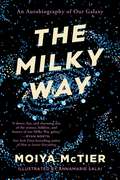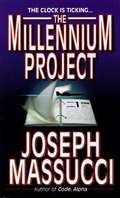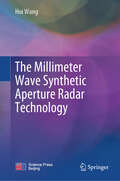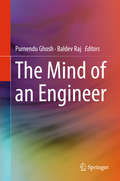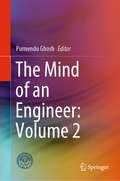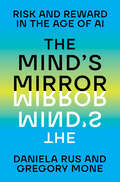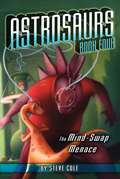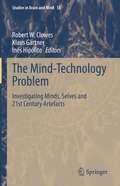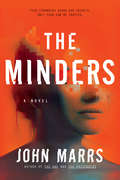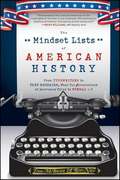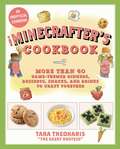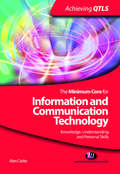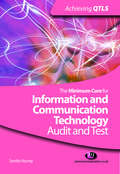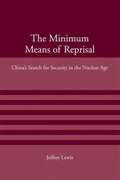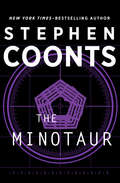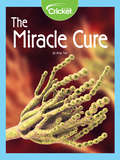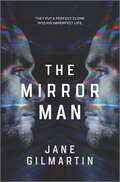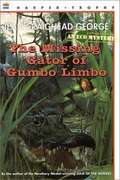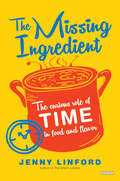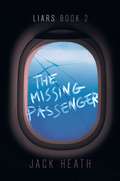- Table View
- List View
The Military’s Business
by Mikkel Vedby RasmussenIf the military were a business, would you buy shares? Over recent years, Western armed forces, particularly the US, have been costing more yet achieving less. At the same time, austerity measures are reducing defence budgets. This book uses defence data to examine the workings of modern Western militaries and explore what kind of strategies can overcome this gap between input and output. Instead of focusing on military strategy, Mikkel Vedby Rasmussen seeks to draw on the ideas of business strategy to assess alternative business cases - reforming military HR to combat instability in the 'Global South' or utilising new technologies to overcome the prohibitive costs of current systems. Analysing the philosophical, strategic and budgetary underpinnings of these alternatives, he concludes that a more radical break from current military organisational practices is needed which would allow them to fit within a nation's overall national security system without ever-increasing budgets.
The Milk Makers
by Gail GibbonsFrom the Book Jacket: A READING RAINBOW FEATURE SELECTION You probably drink milk at almost every meal. But have you ever wondered where it comes from? Cows eat special feed to make good milk. But after the cow is milked, there are still many steps the milk must go through before it reaches you. This book describes them all. And you'll be surprised to find how many other things you eat and drink come from milk, too. Gail Gibbons's unique style makes this a fascinating book for children and adults alike. "At last! Here is an interesting, informative book on milk production for young readers...." -School Library Journal "Gibbons' sturdy artwork and concise writing style are used to best advantage. . . [s]he does her usual excellent job of melding attractive illustrations and straightforward text into a cohesive piece [readers] will learn from and enjoy." -Booklist GAIL GIBBONS has written and illustrated many award-winning books for children, including Up Goes the Skyscraper!
The Milky Way: An Autobiography of Our Galaxy
by Moiya McTierIn this approachable and fascinating biography of the galaxy, an astrophysicist and folklorist details everything humans have discovered—from the Milky Way's formation to its eventual death, and what else there is to learn about the universe we call home. After a few billion years of bearing witness to life on Earth, of watching one hundred billion humans go about their day-to-day lives, of feeling unbelievably lonely, and of hearing its own story told by others, The Milky Way would like a chance to speak for itself. All one hundred billion stars and fifty undecillion tons of gas of it. It all began some thirteen billion years ago, when clouds of gas scattered through the universe's primordial plasma just could not keep their metaphorical hands off each other. They succumbed to their gravitational attraction, and the galaxy we know as the Milky Way was born. Since then, the galaxy has watched as dark energy pushed away its first friends, as humans mythologized its name and purpose, and as galactic archaeologists have worked to determine its true age (rude). The Milky Way has absorbed supermassive (an actual technical term) black holes, made enemies of a few galactic neighbors, and mourned the deaths of countless stars. Our home galaxy has even fallen in love. After all this time, the Milky Way finally feels that it's amassed enough experience for the juicy tell-all we've all been waiting for. Its fascinating autobiography recounts the history and future of the universe in accessible but scientific detail, presenting a summary of human astronomical knowledge thus far that is unquestionably out of this world. NAMED A BEST BOOK OF 2022 BY PUBLISHERS WEEKLY AND SCIENCENET NAMED A BEST AUDIOBOOK OF 2022 BY BOOKPAGE
The Millennium Project
by Joseph MassucciWHEN THE CLOCK STRIKES TWELVE -- One week before the end of the millennium, the microprocessors controlling America's top-secret strategic defense satellite network fail, rendering the network useless and the country vulnerable to attack. Is the Millennium Bug to blame? As experts scramble to defeat the problem, one mad genius and his small army of doomsday mercenaries set in motion a plan to use the Y2K bug to commit the crime of the millennium. If his plan succeeds, the world's financial systems will be left in ruins. And worse, an accidental shutdown of the U.S. nuclear arsenal and nuclear reactors will unleash an ecological catastrophe of global proportions. With the seconds ticking away, Washington throws all of its resources into a desperate battle to save the country -- and the world -- from The Millennium Project.
The Millimeter Wave Synthetic Aperture Radar Technology
by Hui WangThis book highlights the basic theories and technical principles of the synthetic aperture radar (SAR), aiming to bridge theories and applications for readers. Supported by the practical experience of the author's dedicated research, this book also constructs the SAR theoretical system from multiple perspectives.The synthetic aperture radar (SAR) is a weather-independent microwave remote sensing device that involves a number of multidisciplinary fields such as signal processing and image information processing. Written by experts in remote sensing and signal processing, the book explains the signal echo modeling, imaging principles and algorithms, image quality control methods, and image applications. Readers are provided with concise descriptions of commonly used imaging algorithms for SAR in multiple regimes, modes, and applications, including the Range Doppler Algorithm (RDA) and the Frequency Scaling Algorithm (FSA). Continuous wave/pulse regime SAR technology, inverse synthetic aperture radar (ISAR) technology, digital beam forming (DBF), interferometry, and moving target detection methods are discussed in detail.The book is a must-read and comprehensive reference for researchers and engineers engaged in the R&D of the SAR and for graduate students interested in the field.
The Mind of an Engineer
by Baldev Raj Purnendu GhoshThe Indian National Academy of Engineering (INAE)promotes the endeavour of the practitioners of engineering and technology andrelated sciences to solve the problems of national importance. The book is aninitiative of the INAE and a reflectionof the experiences of some of the Fellows of the INAE in the fields of science,technology and engineering. The book is about the reminiscences, eurekamoments, inspirations, challenges and opportunities in the journey theprofessionals took toward self-realisation and the goals they achieved. Thebook contains 58 articles on diverse topics that truly reflects the way the meaningful mindof an engineer works.
The Mind of an Engineer: Volume 2
by Purnendu GhoshThis book is a collection of chapters reflecting the experiences and achievements of some of the Fellows of the Indian National Academy of Engineering (INAE). The book comprises essays that look at reminiscences, eureka moments, inspirations, challenges and opportunities in the journey of an engineering professional. The chapters look at the paths successful engineering professionals take towards self-realisation, the milestones they crossed, and the goals they reached. The book contains 38 chapters on diverse topics that truly reflect the way the meaningful mind of an engineer works.
The Mind's Mirror: Risk and Reward in the Age of AI
by Gregory Mone Daniela RusAn exciting introduction to the true potential of AI from the director of MIT’s Computer Science and Artificial Intelligence Laboratory. Imagine a technology capable of discovering new drugs in days instead of years, helping scientists map distant galaxies and decode the language of whales, and aiding the rest of us in mundane daily tasks, from drafting email responses to preparing dinner. Now consider that this same technology poses risks to our jobs and society as a whole. Artificial Intelligence is no longer science fiction; it is upending our world today. As advances in AI spark fear and confusion, The Mind’s Mirror reminds us that in spite of the very real and pressing challenges, AI is a force with enormous potential to improve human life. Computer scientist and AI researcher Daniela Rus, along with science writer Gregory Mone, offers an expert perspective as a leader in the field who has witnessed many technological hype cycles. Rus and Mone illustrate the ways in which AI can help us become more productive, knowledgeable, creative, insightful, and even empathetic, along with the many risks associated with misuse. The Mind’s Mirror shows readers how AI works and explores what we, as individuals and as a society, must do to mitigate dangerous outcomes and ensure a positive impact for as many people as possible. The result is an accessible and lively exploration of the underlying technology and its limitations and possibilities—a book that illuminates our possible futures in the hopes of forging the best path forward.
The Mind-Swap Menace
by Steve Cole Woody FoxSmashing space stations! While on another vital mission, Captain Teggs and his crew nearly crash into an unknown spaceship. But when it spins around, the gaping hole and the mark of the meat-eaters reveal that it's a carnivore space station! What's it doing in the middle of the Vegetarian Sector? Teggs and his chief engineer, Iggy, board the space station to check it out. They soon discover that the only remaining dinosaurs in the ship are also two of the most evil criminals in the universe, and one of them is a genius. He's built a machine that can swap minds, and he's going to use it on Teggs and Iggy so he and his partner can fulfill their dreams of riches! It's up to Teggs and his crew to stop them, but how can they when no one knows who is who?
The Mind-Swap Menace
by Steve Cole Woody FoxSmashing space stations! While on another vital mission, Captain Teggs and his crew nearly crash into an unknown spaceship. But when it spins around, the gaping hole and the mark of the meat-eaters reveal that it's a carnivore space station! What's it doing in the middle of the Vegetarian Sector? Teggs and his chief engineer, Iggy, board the space station to check it out. They soon discover that the only remaining dinosaurs in the ship are also two of the most evil criminals in the universe, and one of them is a genius. He's built a machine that can swap minds, and he's going to use it on Teggs and Iggy so he and his partner can fulfill their dreams of riches! It's up to Teggs and his crew to stop them, but how can they when no one knows who is who?
The Mind-Technology Problem: Investigating Minds, Selves and 21st Century Artefacts (Studies in Brain and Mind #18)
by Inês Hipólito Robert W. Clowes Klaus GärtnerThis edited book deepens the engagement between 21st century philosophy of mind and the emerging technologies which are transforming our environment. Many new technologies appear to have important implications for the human mind, the nature of our cognition, our sense of identity and even perhaps what we think human beings are. They prompt questions such as: Would an uploaded mind be 'me'? Does our reliance on smart phones, or wearable gadgets enhance or diminish the human mind? and: How does our deep reliance upon ambient artificial intelligence change the shape of the human mind? Readers will discover the best philosophical analysis of what current and near future 21st technology means for the metaphysics of mind. Important questions are addressed on matters relating to the extended mind and the distributed self. Expert authors explore the role that the ubiquitous smart phone might have in creating new forms of self-knowledge. They consider machine consciousness, brain enhancement and smart ambient technology, and what they can tell us about phenomenal consciousness. While ideas of artificial general intelligence, cognitive enhancements and the smart environment are widely commented on, serious analysis of their philosophical implications is only getting started. These contributions from top scholars are therefore very timely, and are of particular relevance to students and scholars of the philosophy of mind, philosophy of technology, computer science and psychology.
The Minders
by John MarrsIn this electrifying near-future thriller, five strangers guard government secrets, but only four can be trusted.In the 21st century, information is king. But computers can be hacked and files can be broken into - so a unique government initiative has been born. Five ordinary people have been selected to become Minders - the latest weapon in thwarting cyberterrorism. Transformed by a revolutionary medical procedure, the country's most classified information has been taken offline and turned into genetic code implanted inside their heads.Together, the five know every secret - the truth behind every government lie, conspiracy theory and cover up. In return, they're given the chance to leave their problems behind and a blank slate to start their lives anew.But not everyone should be trusted, especially when they each have secrets of their own they'll do anything to protect...
The Mindset Lists of American History: From Typewriters to Text Messages, What Ten Generations of Americans Think Is Normal
by Tom Mcbride Ron NiefSnapshots of the U. S. 's last nine generations--from the creators of the Mindset List media sensation Just as high school graduates in 1957 couldn't imagine life without zippers, those of 2009 can't imagine having to enter phone booths and deposit coins in order to call someone from the street corner. Every August, the Mindset List highlights the cultural touchstones that have shaped the lives of that year's incoming college class. Now this fascinating book extends the Mindset List approach to dramatize what it was like to grow up for every American generation since 1880, showcasing the remarkable changes in what Americans have considered "normal" about the world around them. Expands Tom McBride and Ron Nief's popular annual Mindset Lists to explore the mindset of nine generations of Americans, from 1880 to the future high school graduates of 2030 Offers a novel and absorbing way to understand the frame of reference of Americans through history, whether it's the high school grads of 1918, who viewed riding an elevator as a thrill second only to roller coasters, or those of 2009, who have always thought of "friend" as an active verb Puts a human face on the evolution of historical changes related to technology, the struggle for rights and equality, the calamities of war and depression, and other areas The annual Mindset List garners extensive media attention, including on Today, The Early Show, the NBC Nightly News, CNN, and Fox as well as in the Wall Street Journal, the New York Times, USA Today, the Los Angeles Times, Time magazine, and hundreds of international publications Whatever your own generational mindset, this book will give you an entertaining and important new tool for understanding the unique perspective and experience of Americans over more than a hundred and fifty years.
The Minecrafter's Cookbook: More Than 40 Game-Themed Dinners, Desserts, Snacks, and Drinks to Craft Together
by Tara TheoharisThe Minecrafter's Cookbook brings the Overworld to life with over 40 fantastic, Minecraft-themed recipes that kids and parents can make together. From main courses that will fill your hunger bar; to enchanted snacks that Alex and Steve couldn’t survive without; to party-friendly, game-themed desserts and potion drinks, there is plenty in this book to enchant young gamers and their families. Kids will love the accompanying illustrations of their favorite characters and scenes, while parents will appreciate the simple, step-by-step directions to guide them as they craft. The Minecrafter's Cookbook makes cooking an irresistible adventure: Includes photos of each finished item, plus colorful illustrations of popular Minecrafting scenes and characters for maximum fun. Features over 40 kid-friendly meals, drinks, and desserts including Beetroot Stew, Golden Apples, Grass Block Brownies, and Creeper Crispies! Encourages young gamers to power down and enjoy family time in the kitchen The delicious recipes in this book are sure to make spending time together a whole lot more fun!
The Minimum Core for Information and Communication Technology: Audit And Test (Achieving QTLS Series)
by Alan ClarkeThe teacher training framework, introduced in September 2007, requires all teachers in the post-16 sector to possess knowledge, understanding and personal skills to at least level 2 in the minimum core for ICT. Coverage and assessment of the minimum core have to be embedded in all Certificate and Diploma courses leading to QTLS and ATLS status. This book is a practical guide to ICT for trainee teachers in the Lifelong Learning Sector. It enables trainee teachers to identify and develop their own ICT skills and to support their students in ICT.
The Minimum Core for Information and Communication Technology: Audit And Test (Achieving QTLS Series)
by Sandra MurrayThis book supports trainee teachers in the Lifelong Learning Sector in the assessment of their knowledge of ICT. A self-audit section is included to help trainees understand their level of competence and confidence and will help them identify any gaps in their knowledge and skills. This is followed by exercises and activities to support and enhance learning. The book covers all the content of the LLUK standards for the minimum core for information and communication technology. Coverage and assessment of the core have to be embedded in all Certificate and Diploma courses leading to QTLS and ATLS status.
The Minimum Means of Reprisal: China's Search for Security in the Nuclear Age
by Jeffrey G. LewisAmong the five nations authorized under the Nuclear Nonproliferation Treaty to possess nuclear weapons, China has the smallest nuclear force and maintains the most restrained nuclear posture. In The Minimum Means of Reprisal, Jeffrey Lewis examines patterns in Chinese defense investments, strategic force deployments, and arms control behavior to develop an alternative assessment of China's nuclear forces. The Minimum Means of Reprisal finds that China's nuclear deployment and arms control patterns stem from the belief that deterrence is relatively unaffected by changes in the size, configuration, and readiness of nuclear forces. As a result, Lewis argues, Chinese policy has tended to sacrifice offensive capability in favor of greater political control and lower economic costs. The future of cooperative security arrangements in space will depend largely on the U. S. -Chinese relationship. Lewis warns that changes in U. S. defense strategy, including the development of new strategic forces and the weaponization of space, will prevent the United States from reassuring China in the event that its leaders begin to lose confidence in their restrained deterrent. The result may further damage the already weakened arms control regime and increase the threat to the United States and the world. Lewis provides policy guidance for those interested in the U. S. -Chinese security relationship and in global security arrangements more generally.
The Minotaur (Jake Grafton #2)
by Stephen CoontsFrom a New York Times–bestselling author: A military pilot is entangled in the hunt for a Cold War spy selling high-tech secrets to the USSR. Navy pilot Jake Grafton flies fighter jets with ice water in his veins. But when he&’s assigned a desk job in the Pentagon as the head of a top-secret stealth bomber program, his nerve is tested as never before. Colleagues start dying mysteriously, test flights are sabotaged, and the program is threatened at every level. If Grafton can&’t infiltrate a web of espionage and counterespionage centered on the deadly traitor code-named the Minotaur, he stands to lose much more than just his career. The Minotaur is an exhilarating thriller revealing the complexities of military technology R&D by the acclaimed author of Flight of the Intruder, The Red Horseman, and other novels. In the words of Tom Clancy, &“Stephen Coonts, like Jake Grafton, just keeps getting better.&” This ebook features an illustrated biography of Stephen Coonts, including rare photos from the author&’s personal collection.
The Minotaur (Jake Grafton #2)
by Stephen CoontsFrom a New York Times–bestselling author: A military pilot is entangled in the hunt for a Cold War spy selling high-tech secrets to the USSR. Navy pilot Jake Grafton flies fighter jets with ice water in his veins. But when he&’s assigned a desk job in the Pentagon as the head of a top-secret stealth bomber program, his nerve is tested as never before. Colleagues start dying mysteriously, test flights are sabotaged, and the program is threatened at every level. If Grafton can&’t infiltrate a web of espionage and counterespionage centered on the deadly traitor code-named the Minotaur, he stands to lose much more than just his career. The Minotaur is an exhilarating thriller revealing the complexities of military technology R&D by the acclaimed author of Flight of the Intruder, The Red Horseman, and other novels. In the words of Tom Clancy, &“Stephen Coonts, like Jake Grafton, just keeps getting better.&” This ebook features an illustrated biography of Stephen Coonts, including rare photos from the author&’s personal collection.
The Miracle Cure
by Amy TaoWhen a person had an infection prior to the twentieth century, they could only rely on their immune system to heal, which sometimes didn't work. This all changed when a man named Alexander Fleming discovered penicillin - entirely on accident! Thanks to Fleming, the medical field made huge advancements that have saved hundreds of lives. Learn more about Fleming's miracle mold!
The Mirror Man: A Novel
by Jane Gilmartin&“A cloning story that reads like a thriller… [for] fans of science fiction and corporate espionage.&” —Library JournalMeet Jeremiah Adams. There are two of him.The offer is too tempting: be part of a scientific breakthrough, step out of his life for a year, and be paid hugely for it. When ViMed Pharmaceutical asks Jeremiah to be part of an illegal cloning experiment, he sees it as a break from an existence he feels disconnected from. No one will know he&’s been replaced—not the son who ignores him, not his increasingly distant wife—since a revolutionary drug called Meld can transfer his consciousness and memories to his copy.From a luxurious apartment, he watches the clone navigate his day-to-day life. But soon Jeremiah discovers that examining himself from an outsider&’s perspective isn&’t what he thought it would be, and he watches in horror as &“his&” life spirals out of control. ViMed needs the experiment to succeed—they won&’t call it off and are prepared to remove any obstacle. With his family in danger, Jeremiah needs to finally find the courage to face himself head-on.
The Missing 'Gator of Gumbo Limbo: An Ecological Mystery
by Jean Craighead GeorgeSixth-grader Liza K., one of five homeless people living in an unspoiled forest in southern Florida, searches for a missing alligator destined for official extermination and studies the delicate ecological balance keeping her outdoor home beautiful.
The Missing Ingredient: The Curious Role Of Time In Food And Flavor
by Jenny LinfordFrom hours in the oven to years in the barrel, this illuminating book examines the relationship between the cook and the clock, and the underappreciated impact that time has on our favorite dishes Two minutes into boiling an egg, the white isn’t set and the yolk is totally raw. After five minutes however, the white is fully set and the yolk slightly runny—a perfectly spoonable, soft-boiled egg. Boil for another three minutes for a set and tender yolk, or an additional five minutes for a fully set yolk. But be careful: once you boil the egg past ten minutes, you’ll have a crumbly yolk and dry, overly firm white. When it comes to boiled eggs, you may think you’re only dealing with one ingredient, but there is another less obvious, but still critical ingredient involved that should not be overlooked: time. The Missing Ingredient is the first book to consider the intrinsic yet often forgotten role of time in creating the flavors and textures we love. Through a series of encounters with ingredients, producers, cooks, artisans, and chefs, acclaimed author of The Chef’s Library Jenny Linford shows how, time and again, time itself is the invisible ingredient in our most cherished recipes. Playfully structured through different periods of time, the book examines the fast and slow, from the seconds it takes for sugar to caramelize to the centuries it takes for food heritage to be passed down from our ancestors. From the brevity of blanching and the days required in the crucial process of fermentation, to the months of slow ripening that make a great cheddar and the years needed for certain wines to reach their peak, Linford dissects each segment of time needed to cook—and enjoy—simple and intricate cuisine alike. Including vignettes from the immediacy of taste (seconds), the exactitude of pasta (minutes), and smoking and barbecuing meats (hours), to maturing cheese (weeks), infusing vanilla extract (months), and perfecting parmigiana and port (years), The Missing Ingredient is an enlightening and essential volume for foodies, bakers, home cooks, chefs, and anyone who appreciates a perfectly-executed dish.
The Missing Link: West European Neutrals and Regional Security
by Curt Gasteyger Richard E. BissellThe Missing Link brings together the views on the defense of the continent of the five principal neutral nations in Europe--Switzerland, Sweden, Finland, Yugoslavia, and Austria--and examines the evolution and current status of the security threats faced by them. The analyses presented here were commissioned by the Programme for Strategic and International Security Studies at the Graduate Institute of International Studies in Geneva.
The Missing Passenger (Liars #2)
by Jack HeathJarli only narrowly escaped death after his world-shattering app made him infamous. Now there&’s a new foe afoot and Jarli is far from safe in this thrilling sequel to The Truth App.When a seemingly unoccupied plane crash lands in the middle of Kelton, Jarli&’s attempts to lay low and out of Viper&’s criminal crosshairs crash lands along with it. The cause of the accident is a mystery until his Truth App uncovers a dangerous secret at the crash site—a secret Viper will do anything to keep buried. Suddenly Jarli is a target again and on the run with his high school tormentor, Doug. There&’s no one he can trust, not even the police—and Jarli&’s starting to think Doug is hiding something, too. Constantly at odds and left with no other choice, they team up to conduct an investigation of their own. But when Doug&’s past comes back to haunt them, Jarli fears that there&’s little hope in getting out of this one alive. Kelton was supposed to be the perfect hiding place. But there&’s no hiding from the truth.


